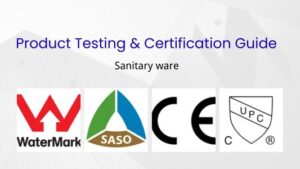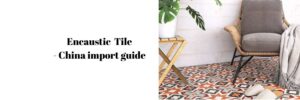Manufacturing Terms
Biscuit/Bisque: The clay body of a tile before glazing or after initial firing.
Dry Pressing: The most common manufacturing method where clay powder is compressed in molds.
Extrusion: Manufacturing method where clay is forced through a die to create a ribbon that is cut into tiles.
Kiln: High-temperature oven used for firing ceramic tiles.
Firing: The kiln process that turns clay into ceramic.
Glazing: Application of glass-like coating to tile for decoration, protection, and impermeability.
Rectification: Process of precision cutting tile edges after firing for exact sizing.
Vitrification: The process of clay turning glass-like during high-temperature firing.
Sintering: The process of compacting and forming a solid mass by heat without melting it to the point of liquefaction.
Monocottura: Single-fired ceramic tile where the body and glaze are fired simultaneously, as opposed to traditional twice-fired methods.
Types of Tiles
Ceramic Tile: Clay-based tile fired in kilns, typically with a glaze, water absorption more than 0.5%.
Porcelain Tile: Premium ceramic tile with lower porosity and higher durability, water absorption less than 0.5%.
Full-Body Porcelain: Porcelain tile with consistent color throughout its thickness.
Color-Body Porcelain: Porcelain tile with a colored body closely matching the surface glaze.
Glazed Tile: Tile with a glass-like layer applied to the surface before final firing.
Unglazed Tile: Tile without a glaze layer, where color and texture go throughout the body.
Glazed Polished Tile: A tile that has been glazed during manufacturing and then mechanically polished after firing to create a high-gloss, reflective surface. This combines the design versatility of glazing with the sleek finish of polishing.
Rustic Tile: Tile with an intentionally weathered, textured, or aged appearance, often featuring uneven surfaces, color variations, and irregular edges to create a handcrafted or antique look. Commonly available in both ceramic and porcelain.
Soluble Salt Porcelain: A type of porcelain tile manufactured using soluble salt technology, where soluble compounds are applied to the tile surface before firing, creating a crystallized finish during the firing process. This creates a subtle sheen without requiring polishing.
Double Loading Tile: Also known as double-charged or through-body porcelain, a manufacturing technique where two layers of clay are pressed together—typically a base layer for structure and a top layer with colored granules for design—resulting in a tile with patterns that penetrate several millimeters deep.
Marble-Look Porcelain: Porcelain tile designed to replicate the appearance of natural marble.
Wood-Look Porcelain: Porcelain tile designed to mimic the appearance and sometimes texture of wood.
Subway Tile: Traditionally, a white rectangular ceramic tile with a 1:2 ratio (typically 3″×6″), originally used in New York subway stations in the early 1900s. Modern subway tiles maintain the rectangular shape but come in various sizes, colors, and materials.
Encaustic Tile: Ceramic tile with patterns created using different colored clays rather than surface glazes.
Large Format Tile: Typically tiles larger than 24″×24″ (60×60cm), requiring special installation considerations.
Thin Porcelain Panels ( slab): Large format, reduced thickness porcelain (3-6mm) used for walls, countertops, and renovations.
Mosaic Tile: Small tiles (usually 2″×2″ or smaller) mounted on mesh backing for easier installation.
Terracotta: Traditional reddish-brown unglazed ceramic tiles.
Physical Properties of Ceramic Tile
Water Absorption Rate: The percentage of water a tile absorbs relative to its weight, a key indicator of porosity.
Abrasion Resistance: A tile’s ability to withstand surface wear from foot traffic.
Mohs Scale: Measure of mineral hardness from 1-10, often used to describe tile surface hardness.
Breaking Strength: The amount of force required to break a tile, measured in newtons or pounds.
Frost Resistance: A tile’s ability to withstand freeze-thaw cycles without damage.
Thermal Shock Resistance: Ability to withstand sudden temperature changes.
Chemical Resistance: Ability to withstand exposure to chemicals.
Stain Resistance: Ability to resist discoloration from spills.
Warpage: Deviation from a flat plane in the tile’s surface.
Porosity: The measure of empty spaces within a tile that can absorb water or other liquids.
PEI Rating: Porcelain Enamel Institute rating system measuring tile durability (Classes 0-5).
DCOF: Dynamic Coefficient of Friction, which measures slip resistance of tile surfaces.
( Anti slip rating ) R-Rating: European system measuring slip resistance, ranging from R9 (minimal slip resistance) to R13 (maximum slip resistance), particularly important for commercial and wet area applications.
Rectified Tile: Tile that has been precisely cut after firing to ensure exact dimensions.
Crazing: Fine cracks in the glaze surface of ceramic tiles.
Dimensional Stability: Ability to maintain size and shape over time.
Shade Variation: System categorizing the degree of variation in color and pattern between tiles within the same product line, it also called Shade Rating or V-Rating (typically V1-V4), with V1 being most uniform and V4 showing significant variation.
Design & Finish Terms of Tiles
Digital Printing: Advanced technology that applies designs to tile surfaces with inkjet printers.
Inkjet Technology: Digital printing method that allows detailed patterns on tile surfaces.
Inkjet HD: High-definition digital printing technology allowing for extremely detailed and realistic patterns on tile surfaces with superior resolution compared to earlier printing methods.
Matte Finish: Non-reflective surface.
Polished Finish: High-gloss surface achieved through mechanical polishing.
Textured Finish: Surface with deliberate texture for aesthetic or slip resistance.
Structured Surface: Three-dimensional surface texture for grip or visual interest
Honed Finish: Smooth, flat finish with minimal reflection.
Satin Finish: A semi-matte tile finish providing a smooth surface with subtle sheen, less reflective than polished but less textured than matte finishes, offering a balance of elegance and practicality.
Lappato Finish: A semi-polished finish where the tile surface is partially polished, creating areas of both matte and glossy texture for a soft, subtle sheen that maintains some slip resistance.
Relief Patterning: Three-dimensional textures or designs raised from the tile surface, created during pressing or added before firing, adding tactile and visual interest.
Rectified Tile Edge: The precisely cut, straight edge of a rectified tile, created by cutting or grinding the edges after firing to ensure exact dimensions and enable tighter grout lines. Rectified edges allow for a more seamless installation.
Beveled Edge: A tile edge that has been cut at an angle (usually 45 degrees) rather than at a right angle, creating a sloped transition from the face to the side of the tile. Beveled edges emphasize grout lines and add architectural interest, commonly found in subway and wall tiles.
Bullnose: Finished edge tile piece with one rounded edge used for borders and transitions.
Cove Base: Tile with a curved bottom edge designed for floor-to-wall transitions.
Trim Pieces: Specially shaped tiles designed for transitions, edges, and corners to provide finished looks without exposed tile edges.
Ceramic Tile Installation & Technical Terms
Grout: Material used to fill spaces between tiles.
Grout Joint: The space between tiles filled with grout material.
Mortar: Adhesive substance used to bond tiles to substrate.
Substrate: The surface underneath tiles.
Spacers: Small pieces inserted between tiles to maintain consistent grout joints.
Tile Cutter: Tool for cutting ceramic tiles.
Wet Saw: Power tool using water to cool blade while cutting tile.
Gauge: The thickness of a tile, an important consideration for transitions between different flooring materials and for load-bearing capacity.
First Choice: Highest quality grade of ceramic tile.



